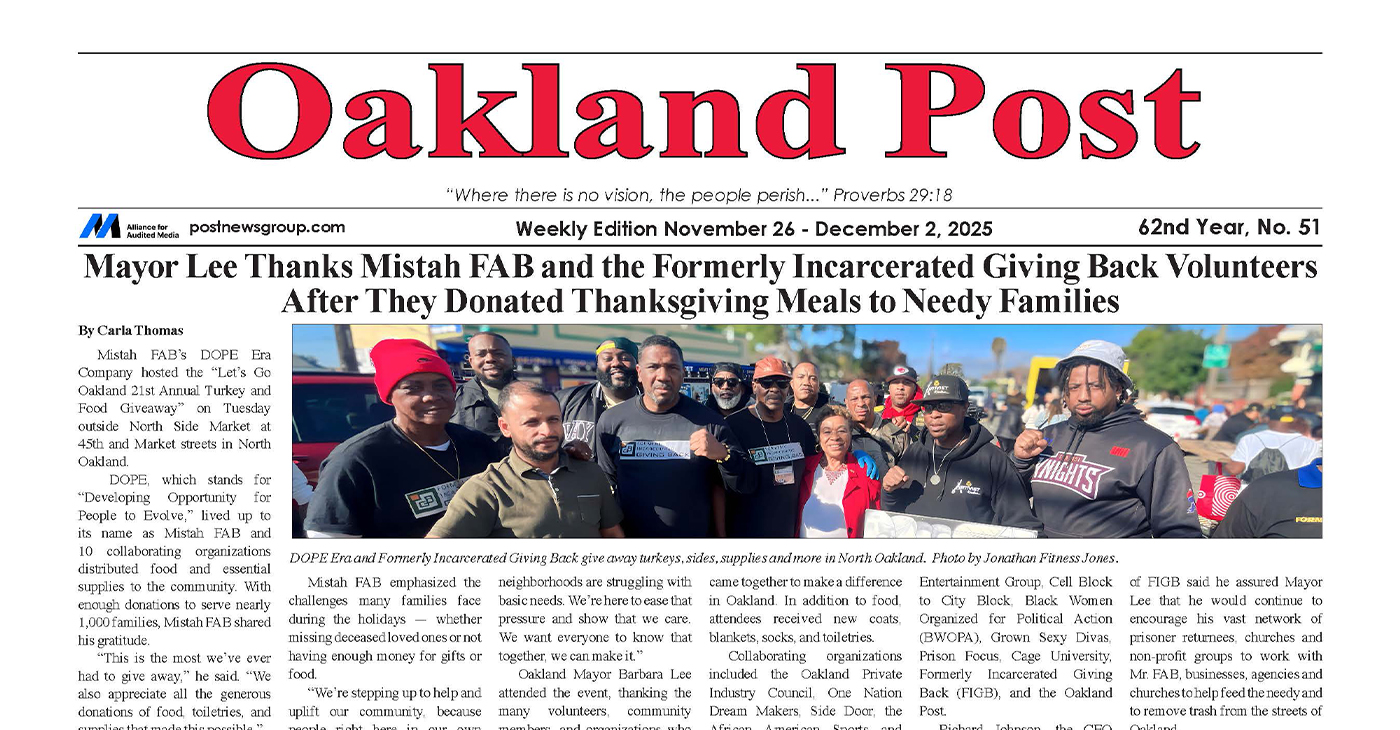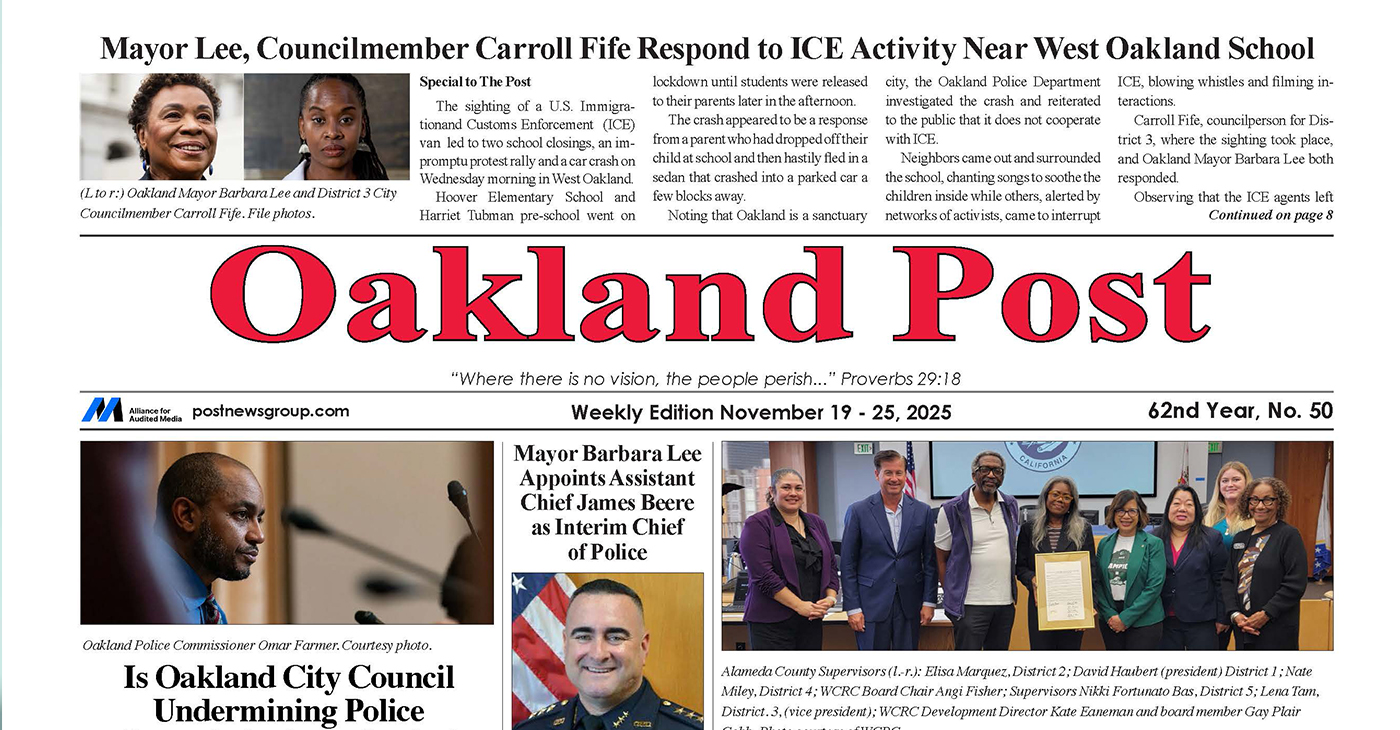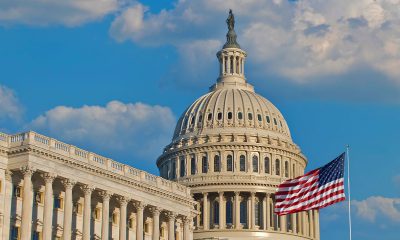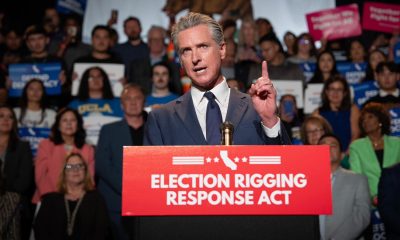Black History
COMMENTARY: New Las Vegas Raiders President is Female, Black, AND Asian
We have never been comfortable with mixed-race kids and what to call them. But since 2010, the multiracial population has grown from 9 million to 33.8 million people, a 276% increase according to the 2020 Census.

By Emil Guillermo
I confess to being a Raiders fan from a very early age.
Even though I was born and raised in San Francisco, as a young boy I cheered Clem Daniels at Frank Youell Field. Old School. Then Daryl Lamonica. Then Kenny Stabler. Warren Wells. Gene Upshaw. Hewritt Dixon. George Atkinson. George Blanda. I loved them all. When they left Oakland the first time, they broke my heart. When they came back, I bought season tickets and broke my bank. And then they left again and broke my heart for good.
I started rooting for the 49ers. I know, blasphemy.
But I always keep an eye on the Las Vegas Raiders. And on July 7, 2022, when they announced a new president, I took a double take.
She looked like a Filipina. To me, she clearly had some Asian blood.
But then they announced her, Sandra Douglas Morgan, and all the stories had some variation of this line: “Morgan becomes the first Black woman in NFL history to ascend to the title of team president.”
Almost every story I found heralded her Blackness. Hooray.
Only it was partially true. From what I found, only NBC News with California homeboy Lester Holt had the story with all the facts.
Morgan was Black. But as my Asian radar suggested, she was also Asian. Not Filipino, but Korean. NBC showed a picture of her mother.
We’ve been here before.
When something great happens to a mixed-race person, why do we ignore the mix?
The Raiders in Las Vegas are trying so hard to be modern and “progressive” (for the NFL). You’ll recall the team gave Colin Kaepernick a tryout.
So why doesn’t a forward-thinking team in Las Vegas, one of the most diverse cities in the nation, just come out and announce that Morgan is both Black and Asian?
Is it because we don’t want to see the Asian parts? Is it the wrong suit in a game where Black trumps?
As I’ve said, we’ve been here before. Kamala Harris is from the East Bay. Her Black father was mostly absent from her life, and her mother, an Asian-Indian UC cancer researcher, was dominant in her upbringing. Still, Harris publicly identified as Black most of her life.
Through her time as a politico in San Francisco, to her rise as attorney general for the state, to her announcement in Oakland seeking the nomination for president, Harris was always Black first. I always noticed. And wrote about it in the Asian American media.
When did things change? When she was selected as the vice-presidential running mate of Joe Biden. And then, of course, when they won and were inaugurated.
How many times did you see the phrase, “First African American, first Asian American, first woman to be vice president of the United States.”
It was American diversity history. Reporters stumbled over how to get it right.
And now, because human nature is what it is, most people have stumbled back to convention. Kamala? Oh, she’s Black.
But it’s not just Kamala. Tiger Woods has always had this problem. When he came on the scene with his first Masters victory in 1997, stories hailed him as the “Black man in a green jacket,” or “the Black man in a white man’s game.”
The column I wrote, published later in my book “Amok,” pointed out calling Tiger “Black” is once again, just half right. His mom is from Thailand. Tiger described his mix as “Cablanasian.” That made people smile but never stuck.
And now as he slumps back from missing the cut at the British Open, Tiger is back to Black.
Why is this all important? There’s accuracy of course, but it shows we have never been comfortable with mixed-race kids and what to call them. But since 2010, the multiracial population has grown from 9 million to 33.8 million people, a 276% increase according to the 2020 Census.
I know mixed-race kids. I made a few of them. I prefer they say they are Asian because they are. But their mom is white. But that doesn’t show. They get passed over and face both subtle and not so subtle discrimination all the time.
The Jewish faith offers a guide. It believes that what defines you passes by way of your mother. Hence Kamala, Tiger, and yes Saundra Douglas Morgan would be Asian.
But in America, the Census uses a “you are what you say you are” basis. Is it just easier to say Black and leave it at that? And ignore Asian? Maybe until someone points it out.
Here’s a vote for being accurate and fair. When Saundra Douglas Morgan made history, we all should honor our diverse America where we can be Black and Asian and anything else. Proudly.
Especially when we make history together.
Emil Guillermo is a veteran journalist and commentator. His work is on www.amok.com
Activism
Oakland Post: Week of November 26 – December 2, 2025
The printed Weekly Edition of the Oakland Post: Week of November 26 – December 2, 2025

To enlarge your view of this issue, use the slider, magnifying glass icon or full page icon in the lower right corner of the browser window.
Activism
Oakland Post: Week of November 19 – 25, 2025
The printed Weekly Edition of the Oakland Post: Week of November 19 – 25, 2025

To enlarge your view of this issue, use the slider, magnifying glass icon or full page icon in the lower right corner of the browser window.
Activism
IN MEMORIAM: William ‘Bill’ Patterson, 94
Bill devoted his life to public service and education. In 1971, he became the founding director for the Peralta Community College Foundation, he also became an administrator for Oakland Parks and Recreation overseeing 23 recreation centers, the Oakland Zoo, Children’s Fairyland, Lake Merritt, and the Henry J. Kaiser Convention Center.

William “Bill” Patterson, 94, of Little Rock, Arkansas, passed away peacefully on October 21, 2025, at his home in Oakland, CA. He was born on May 19, 1931, to Marie Childress Patterson and William Benjamin Patterson in Little Rock, Arkansas. He graduated from Dunbar High School and traveled to Oakland, California, in 1948. William Patterson graduated from San Francisco State University, earning both graduate and undergraduate degrees. He married Euradell “Dell” Patterson in 1961. Bill lovingly took care of his wife, Dell, until she died in 2020.
Bill devoted his life to public service and education. In 1971, he became the founding director for the Peralta Community College Foundation, he also became an administrator for Oakland Parks and Recreation overseeing 23 recreation centers, the Oakland Zoo, Children’s Fairyland, Lake Merritt, and the Henry J. Kaiser Convention Center.
He served on the boards of Oakland’s Urban Strategies Council, the Oakland Public Ethics Commission, and the Oakland Workforce Development Board.
He was a three-term president of the Oakland branch of the NAACP.
Bill was initiated in the Gamma Alpha chapter of Kappa Alpha Psi Fraternity.
In 1997 Bill was appointed to the East Bay Utility District Board of Directors. William Patterson was the first African American Board President and served the board for 27 years.
Bill’s impact reached far beyond his various important and impactful positions.
Bill mentored politicians, athletes and young people. Among those he mentored and advised are legends Joe Morgan, Bill Russell, Frank Robinson, Curt Flood, and Lionel Wilson to name a few.
He is survived by his son, William David Patterson, and one sister, Sarah Ann Strickland, and a host of other family members and friends.
A celebration of life service will take place at Henry J. Kaiser Convention Center (Calvin Simmons Theater) on November 21, 2025, at 10 AM.
His services are being livestreamed at: https://www.facebook.com/events/1250167107131991/
In lieu of flowers, donations can be made to the Euradell and William Patterson scholarship fund TBA.

-

 Activism3 weeks ago
Activism3 weeks agoOakland Post: Week of November 12 – 18, 2025
-

 Activism4 weeks ago
Activism4 weeks agoOakland Post: Week of November 5 – 11, 2025
-

 Activism2 weeks ago
Activism2 weeks agoIN MEMORIAM: William ‘Bill’ Patterson, 94
-

 Activism3 weeks ago
Activism3 weeks agoHow Charles R. Drew University Navigated More Than $20 Million in Fed Cuts – Still Prioritizing Students and Community Health
-

 Bay Area3 weeks ago
Bay Area3 weeks agoNo Justice in the Justice System
-

 #NNPA BlackPress3 weeks ago
#NNPA BlackPress3 weeks agoThe Perfumed Hand of Hypocrisy: Trump Hosted Former Terror Suspect While America Condemns a Muslim Mayor
-

 #NNPA BlackPress2 weeks ago
#NNPA BlackPress2 weeks agoTrump’s Death Threat Rhetoric Sends Nation into Crisis
-

 #NNPA BlackPress4 weeks ago
#NNPA BlackPress4 weeks agoProtecting Pedophiles: The GOP’s Warped Crusade Against Its Own Lies






















































